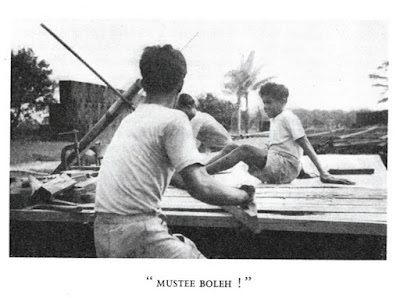a) http://says.com/my/fun/did-you-know-damansara-used-to-be-called-damar-sara-until-someone-made-a-spelling-mistake
b) 'Damansara' Township Name Derived from Spelling Mistake by British Official in 1890s - The Coverage
c) https://celikhartanah.com/cuba-k...
d)https://www.nst.com.my/property/...
The question posed here has been in my mind since my childhood days as I used to live in Damansara Utama without knowing what the word "Damansara" stands for. Let me begin with the caveat that my view of the origin of the name "Damansara" being a spelling mistake is only my assumption based on what is evident in the two old maps of the area as well some knowledge of the history of the implementation of the land registration system in Selangor. It is not an in-depth historical research on the issue.
My comment on the Skyscrapercity forum on 3.10.2017 reads as follows:-
"This is an interesting map that shows the original name of Damansara. Actually, the word "Damansara" has no meaning as it originated from a spelling mistake that occurred around 1890s when the British Resident, Sir William Maxwell, implemented Torrens system of land registration pursuant to the Selangor Registration of Titles Regulations of 1891. The error occurred when the land registrar mistook the letter "r" as "n", and wrongly merged the original two-word name of "Damar Sara" to "Damansara". The error is apparent as maps prior to 1891 contained the original name "Damar Sara". There was an ancient stone jetty & landing area (pengkalan batu) in Damar Sara which was utilised as a tin mining post. It is in the vicinity of what is today Section 23, Shah Alam. A river north of Damar Sara was subsequently named after the wrongly spelt "Damansara" which became the origin of "Mukim Damansara" and the name of as many as 25 housing developments around Petaling Jaya and Kuala Lumpur, with copycats in Johor Bahru as well as in Kuantan. Unlike "Damansara", the original name "Damar Sara" has a specific meaning in old Malay and Sanskrit. "Damar" is a type of resin obtained from a tropical tree. Whilst "Sara" means "precious" or "important" in Sanskrit. "
The relevant maps in the forum as reproduced by Says . com are as follows:-
As you can see based on these older maps it is clear that the place is known as Damar Sara.
I would like to point out that besides these maps, there is a 1877 newspaper article produced by another Skyscrapercity forumer, pseudanon, that shows misspelling of Damar Sara occured at a much earlier date.
Hence back to the question, the earliest occupier of Damar Sara would be the Orang Asli. Around 200BC to 100AD they traded with the Mon Khmer settlers and the local Malays who may have named the area based on its popular produce i.e. Damar (resins). They bartered inland products like resins, incense woods, and feathers for salt, cloth, and iron tools.
I believe that the Mon Khmers were in the area as early as the the Dongson era to mine for tin deposits found along the Klang river and its tributaries. Tin is an essential metal in the creation of tin bronzes, and its acquisition was an important part of ancient cultures from the Bronze Age onward. This can be seen in their artifacts such as Dongson drum and bells found along the Klang river.
Sources of tin were rare, and the metal usually had to be traded over very long distances to meet demand in areas which lacked tin deposits.
According to Suma Oriental by Tom Pires, written between 1512-1515, Klang river area is called "Clam", and the region of the Selangor river is called "Calangor" or "Calamgor". Both rivers are represented as tin-producing rivers. Pires further records that the prospectors and chieftains paid tribute to the Sultan of Malacca in a form of tin ingots.
At the turn of the 19th century the area was occupied by the Mandailing people. Kampung Damar Sara was one of 7 Mandailing settlements in Selangor and Perak. These photographs of a Mandailing kampung in Sumatera might throw some light as to the architecture of early houses of Damar Sara.
Based on the migration of people from Sumatera, I believe that beyond the evidence obtained from the old maps, the original name of Damansara could also be "Dharmasraya" (sanskrit: supreme universal law of nature) which is taken from an area known as Dharmasraya of Sumatera, of which capital was about 200km south of the Kerinci Regency (Kerinci being another name which is familiar to the area of Damansara). Dharmasraya (now Dharmasraya Regency) is said to be the capital of the 11th century Dharmasraya Kingdom (a.k.a Melayu Kingdom). See: Melayu Kingdom - Wikipedia. Through time its namesake in the Malay peninsula could have been corrupted into "Damar Sara" and later "Damansara".
































.jpg)